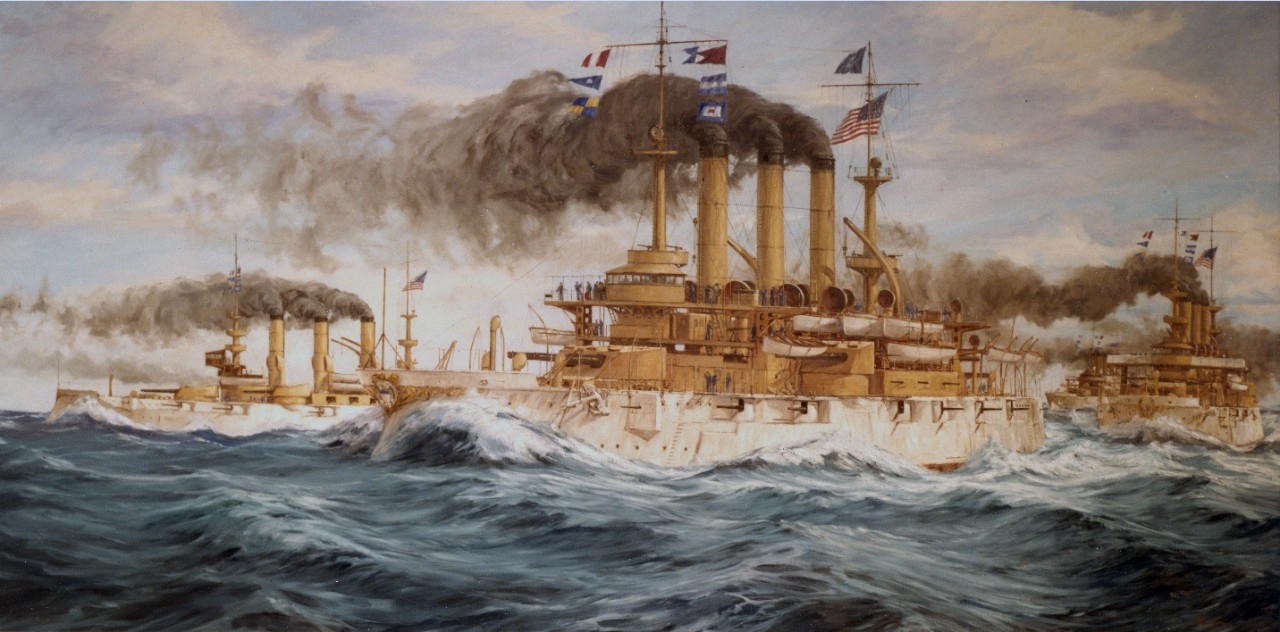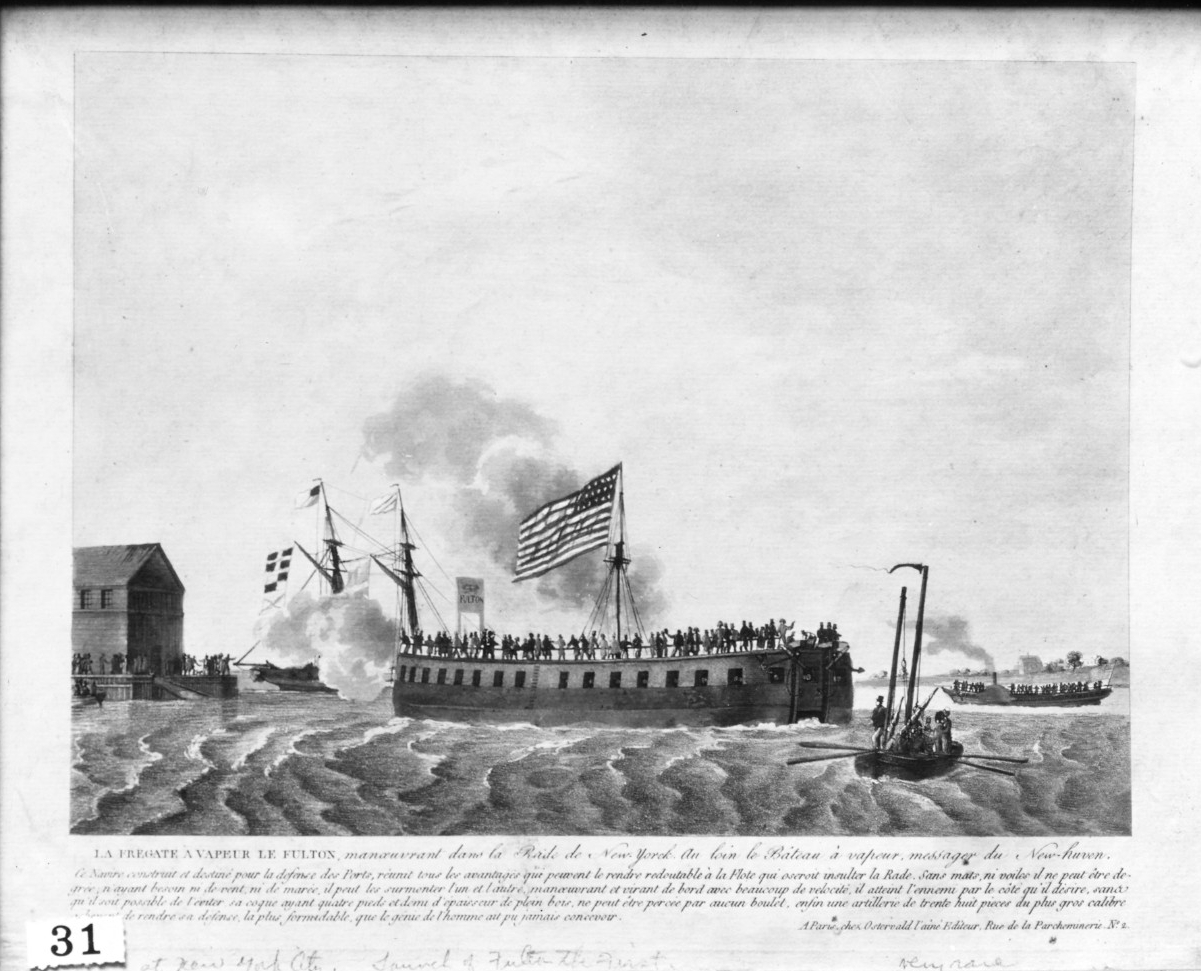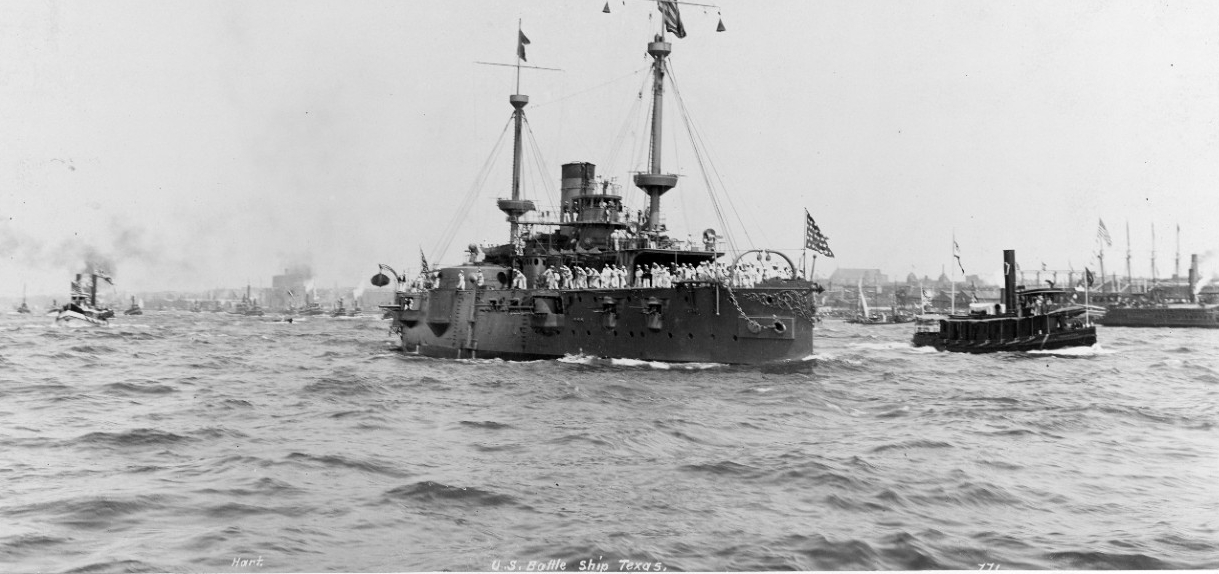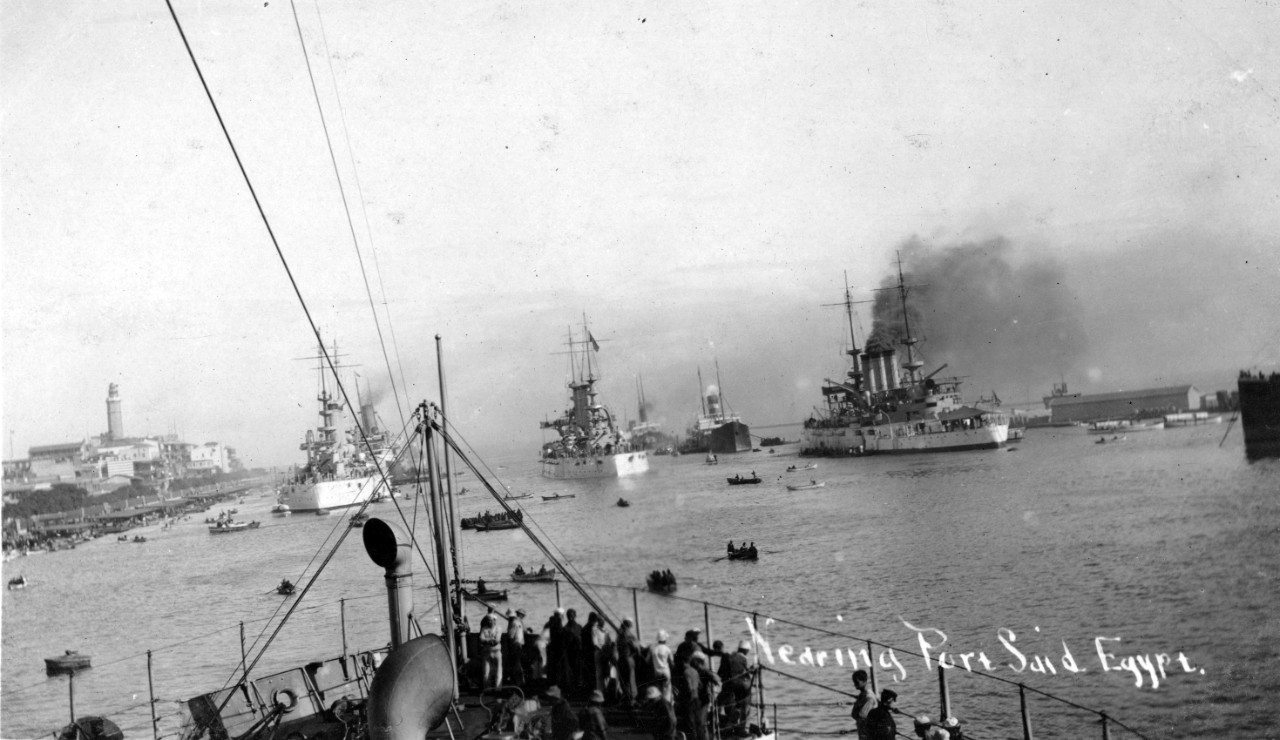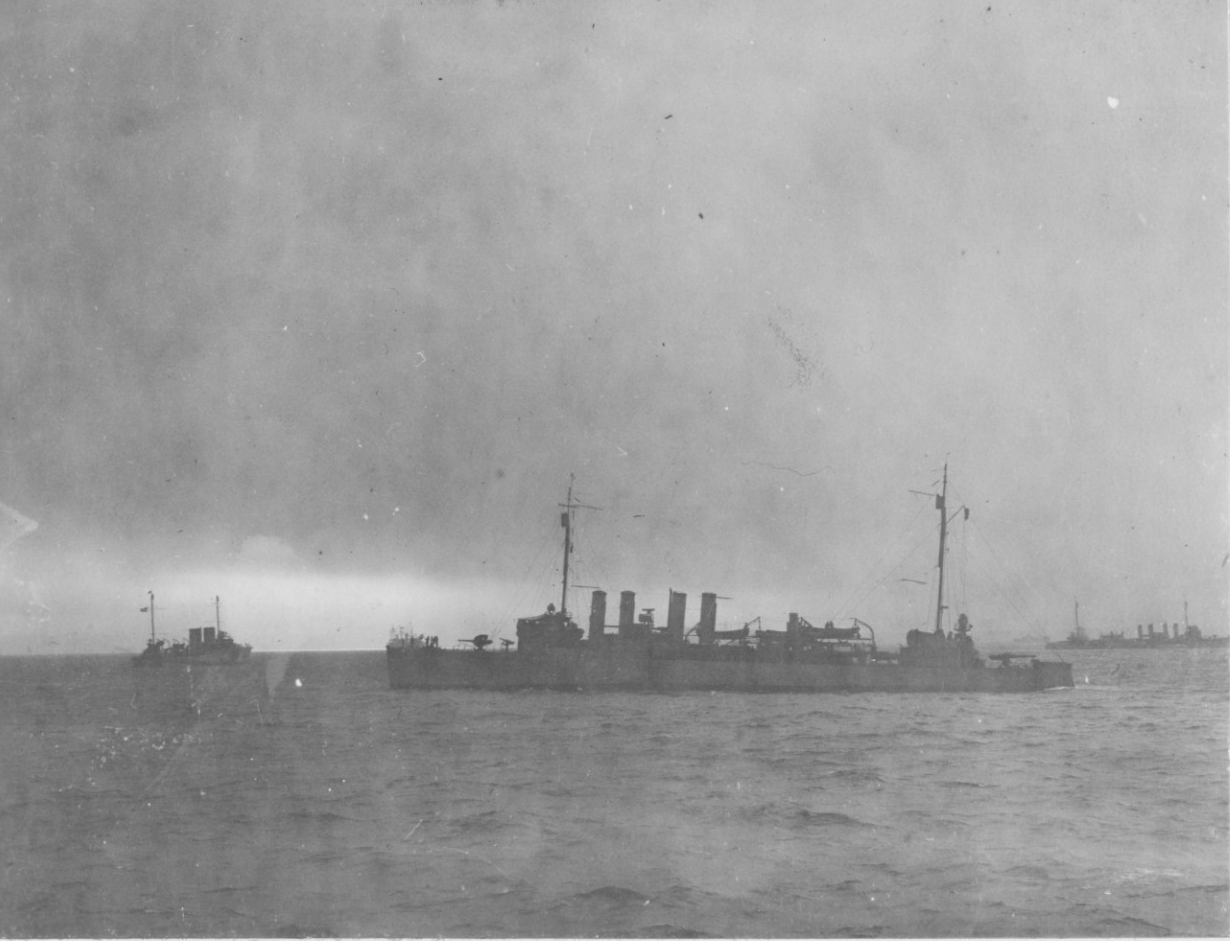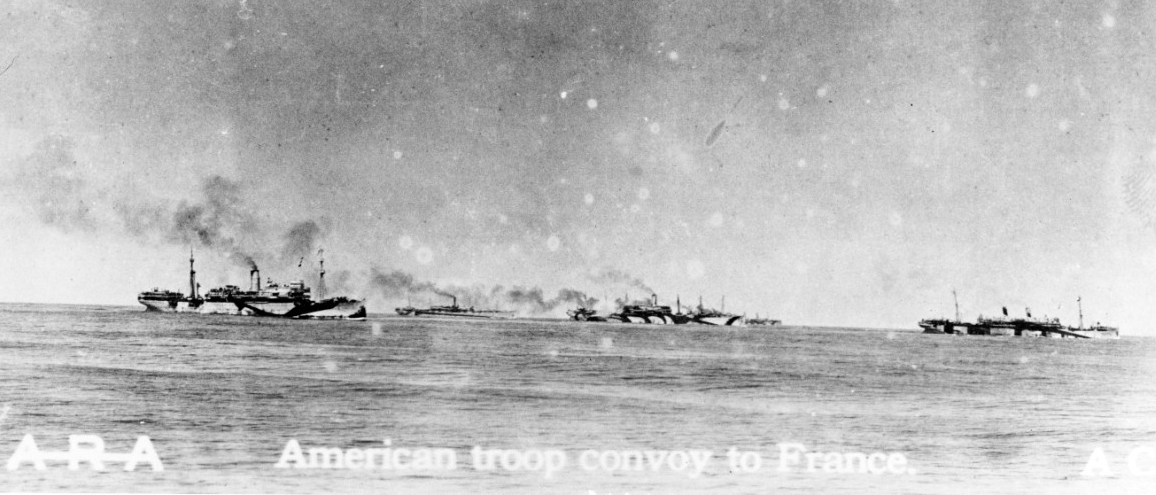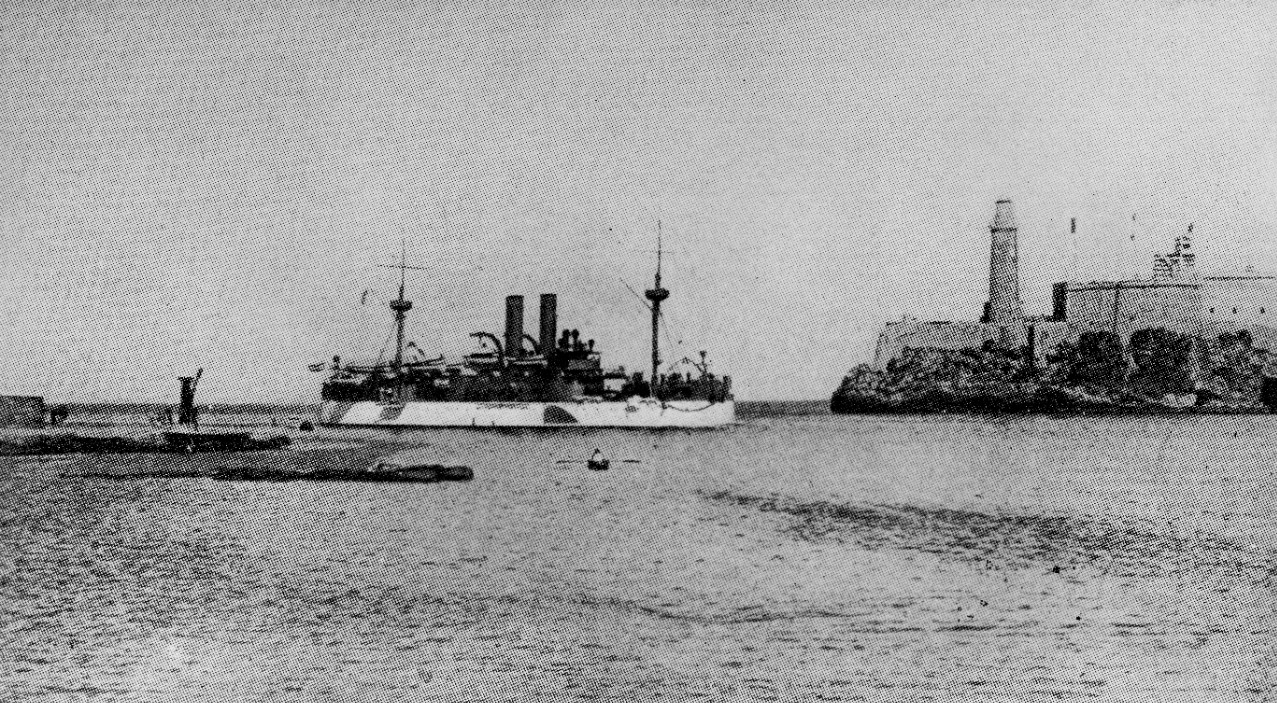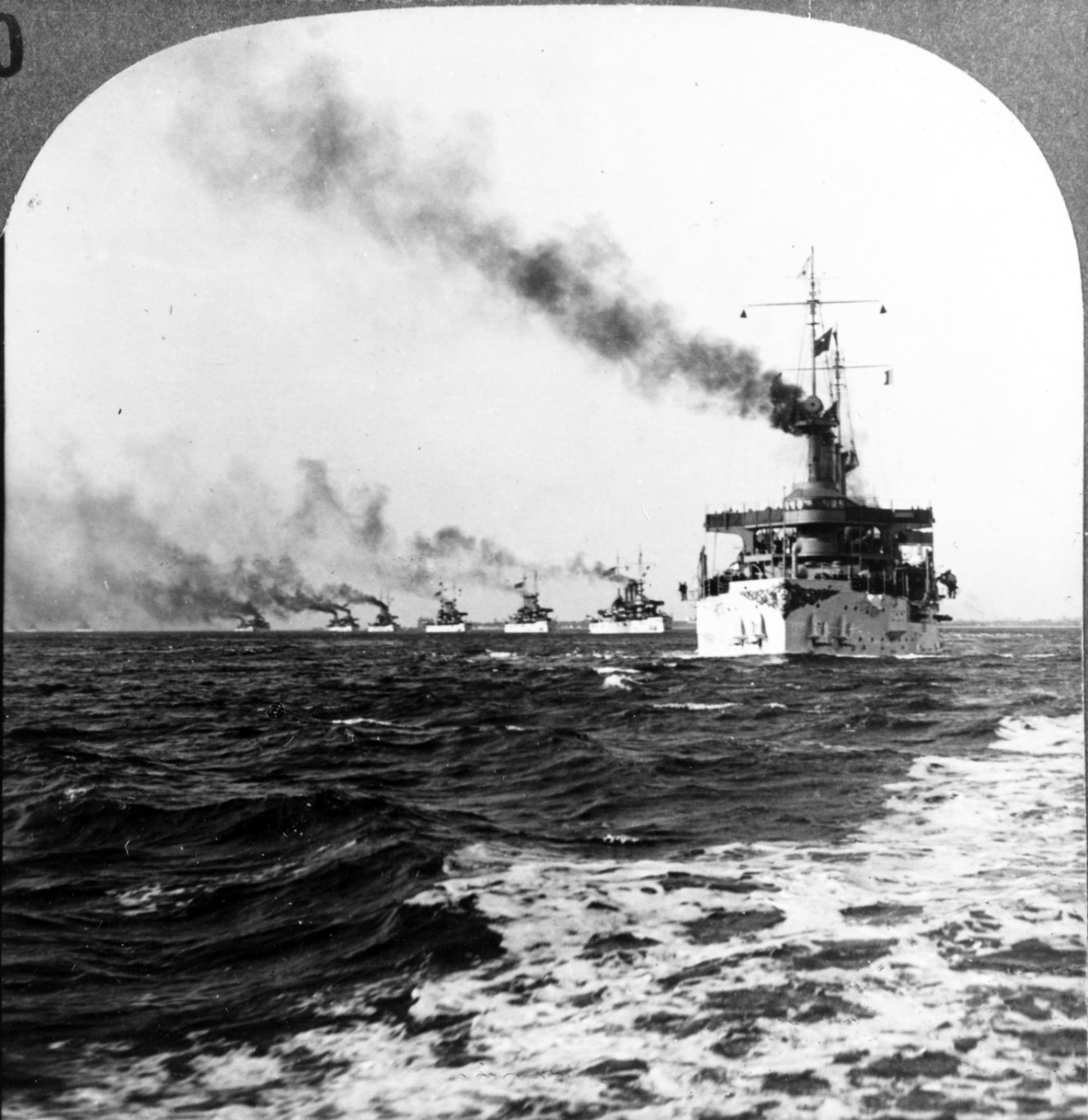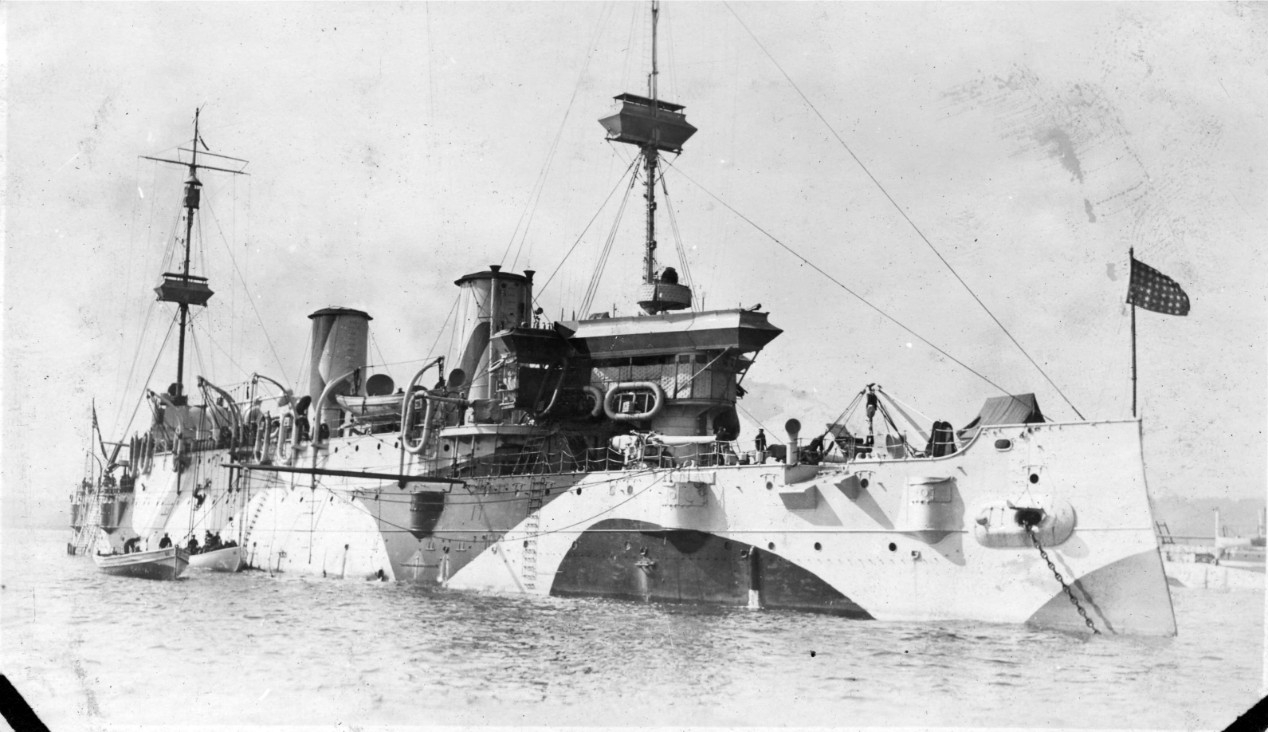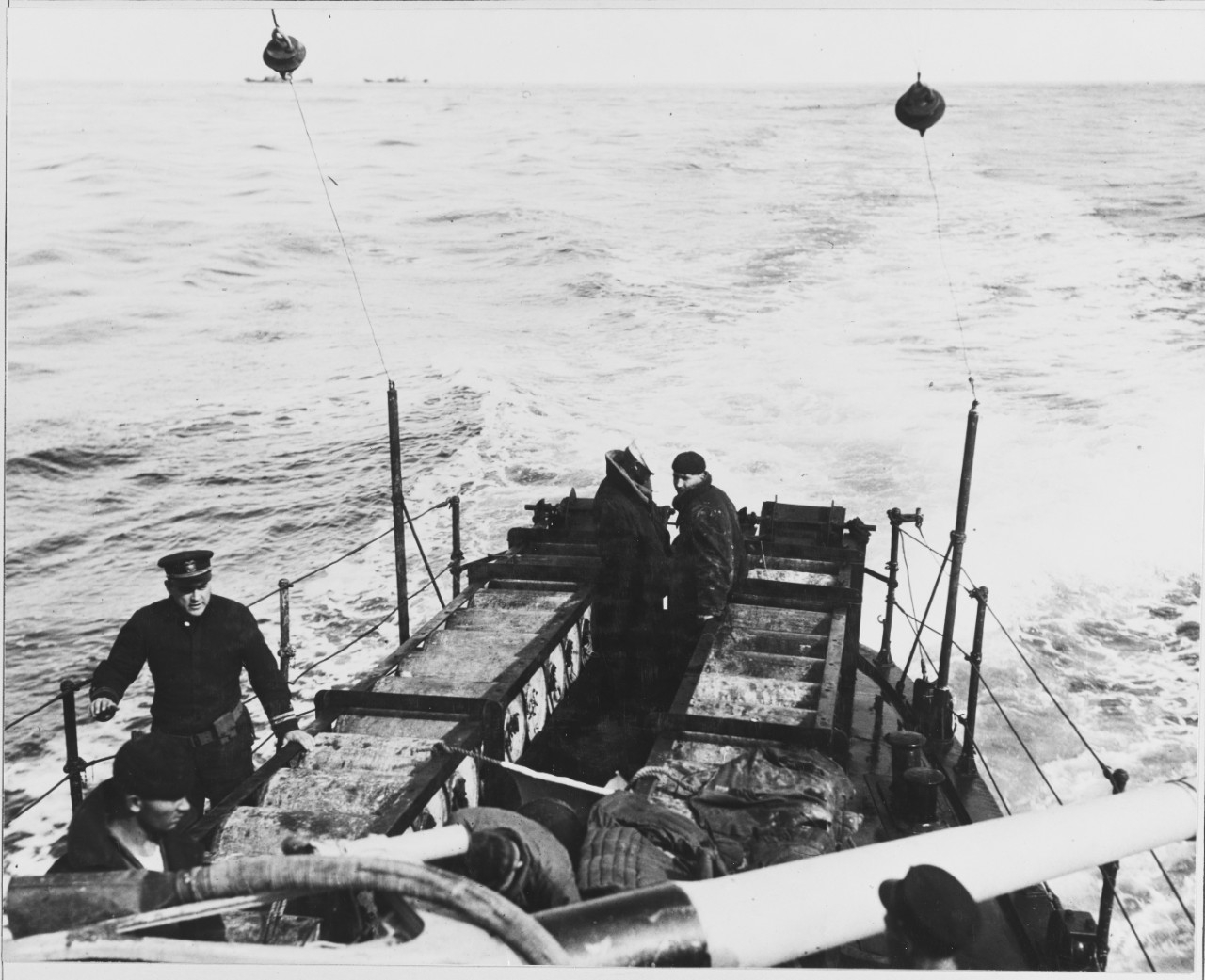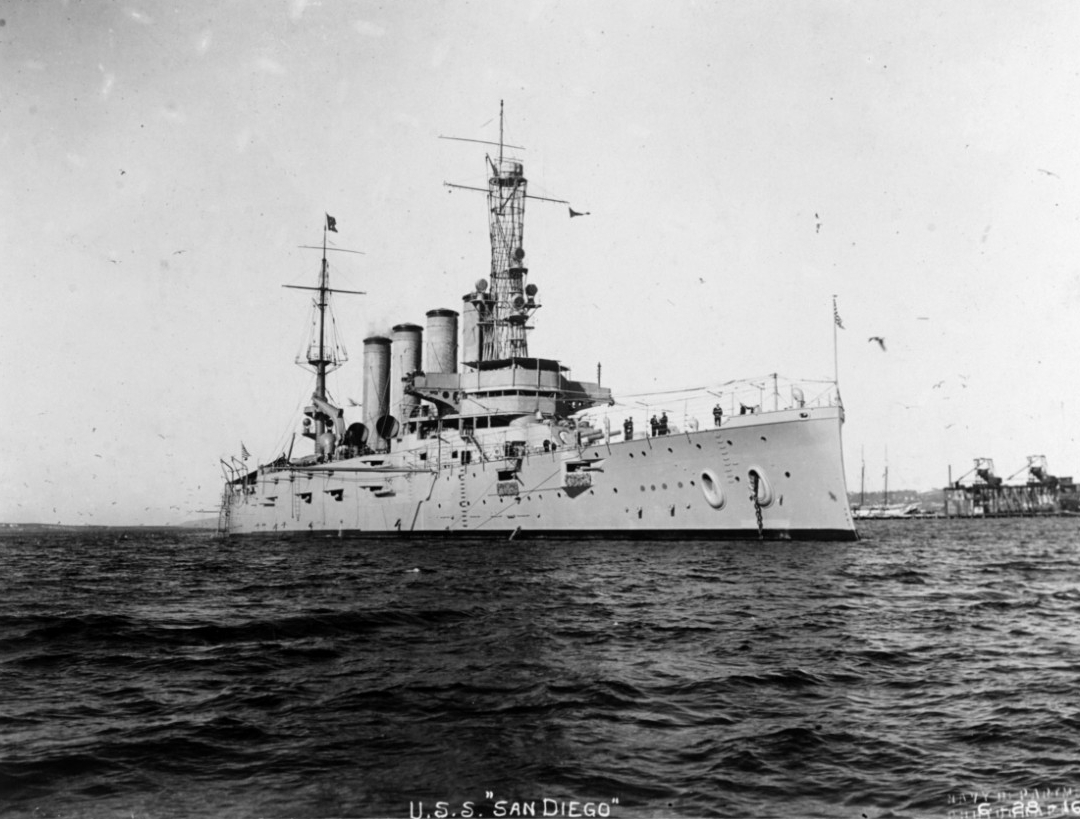Sail to Steam Propulsion
n 1814 and 1815, inventor Robert Fulton built the first war steamer, known both as Fulton and Demologos. The catamaran steam frigate was completed after Fulton’s death and delivered to the Navy in June 1816. Over the next few years, experimentation on steam propulsion was ongoing, however, steam-powered ships were required to still have sails. The Navy officially transitioned from sails to steam in the late 1800s. After the destruction of battleship Maine in Havana Harbor, Cuba, battleship Texas proved its might during the Battle of Santiago during the Spanish-American War.
On 16 December 1907, President Theodore Roosevelt sent the Great White Fleet—16-battleships of the U.S. Atlantic Fleet—on a 14-month voyage around the world to display American sea power. The 43,000-mile journey included 20 port calls across six continents with about 14,000 Sailors and Marines participating. The voyage ended on 22 February 1909, leaving a lasting legacy at home and abroad.
On 2 April 1917, the U.S. joined World War I after years of neutrality. The most significant contribution of the Surface Navy during the "Great War" was the escort and transport of 2 million U.S. Soldiers to France.
*****

